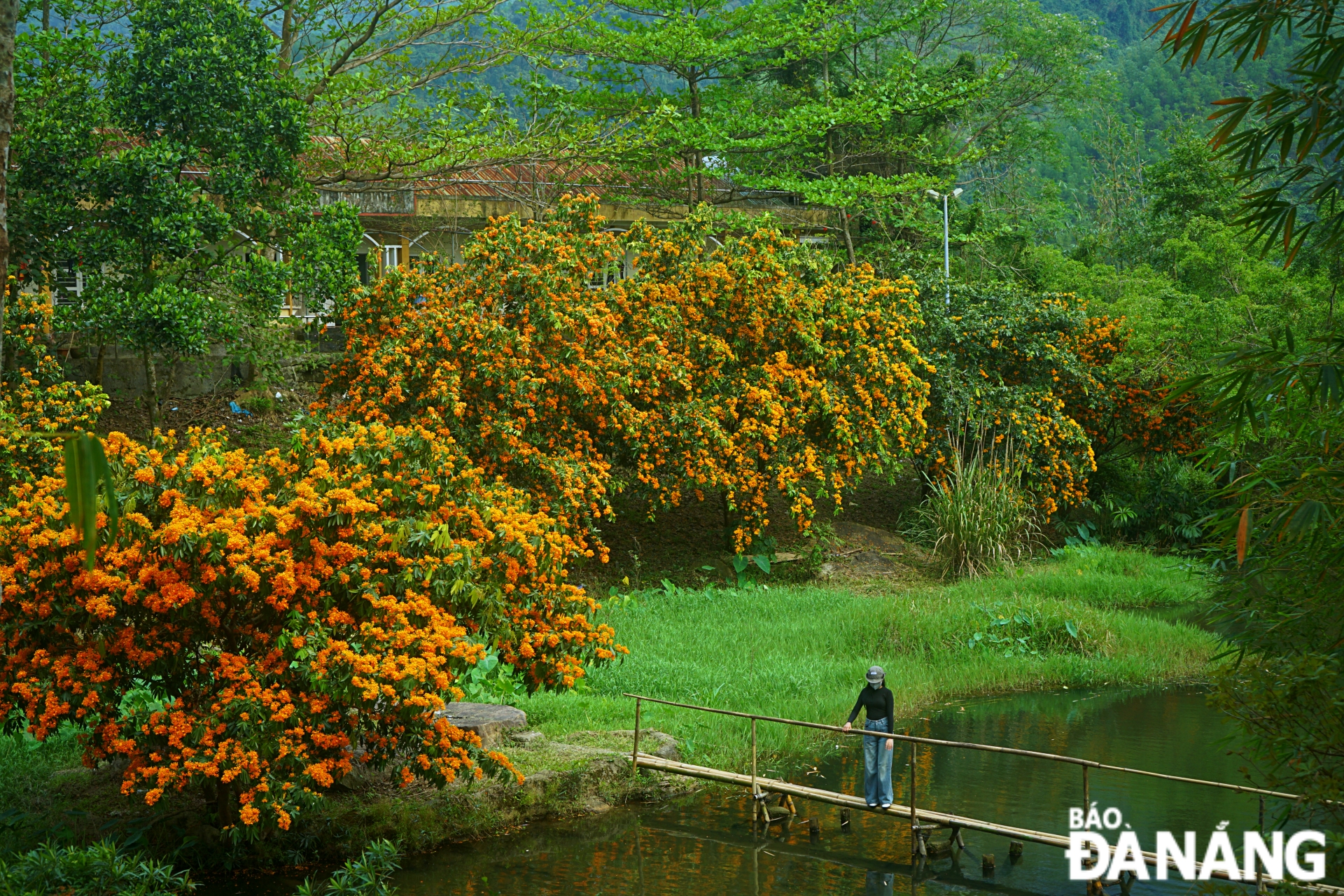Safeguarding intangible cultural heritage in Da Nang
The recent recognition of the Tuy Loan 'banh trang' (rice paper) making craft as a national intangible cultural heritage has provided a strong foundation for Da Nang to protect and preserve its traditional crafts. However, Da Nang is facing challenges in preserving these villages and boosting their development.
 |
| Preservation of traditional craft villages’ village is based on safeguarding craft techniques, and ensuring the highest quality standards for craft products. Photo: T.Y |
Keeping the traditional craft alive
Hoa Phong Communal People's Committee of Vice Chairman Ngo Van Nhan highlighted huge efforts residents and authorities of the commune have made to get their rice paper making craft listed as a national intangible cultural heritage.
Local artisans hope that the embedment of the craft of traditional rice-paper making in Tuy Loan into the list of national intangible cultural heritage will open up new opportunities for their village. At the age of 85, artisan Dang Thi Tuy Phong is no longer strong enough to make rice-paper every day, but she is willing to share her secrete recipe with anyone who wants to learn.
The Tuy Loan Paper – Rice Making Village dates back over 500 years to the time when Emperor Le Thanh Tong issued a royal proclamation to extend the country’s territory.
Despite many ups and downs over the past 5 centuries, local residents are proud of the village's many old houses, its history, and its beautiful setting with its many interesting features that include an old banyan tree, a boat station, a communal house, and others. The villagers also take pride in their rice-paper making.
According Mrs. Phong, Tuy Loan rice paper stands out from similar products in the market as it is soft, flexible, and filled with the aroma of rice grown in fields along the Tuy Loan River.
Tuy Loan rice paper is made entirely by hand with 15 households involved, mainly using rice flour and ingredients such as sesame, ginger and garlic, creating a unique flavor for the rice paper.
Rice papers in this village are still constantly being baked on fire to serve customers from all over the world. Tuy Loan Rice Paper Making Village has gradually been restored by the hands of local people. It is not only grilled for eating as a kind of snack but also used to serve with a bowl of Quang noodles with strong hometown flavor.
The craft of making rice paper in the Tuy Loan Village boasts more than five centuries of history, and passed down through many generations. Tuy Loan rice paper is famous for its delicious taste and crunchy texture.
Mr. Ngo Van Nhan stressed the need for the Tuy Loan Village to get its rice paper products onto the shelves of large retailers like supermarkets and stores. Focus should be on improving the village’s rice paper product packaging design while encouraging all local rice-paper makers to use a common recipe in a bid to ensure the highest quality standards for rice paper products with crispy texture and delicious flavor.
In the future, the village aims to become a tourist destination where visitors can experience making their own rice-paper sheets.
According to Mr. Nhan, the embedment of the craft of traditional rice-paper making in Tuy Loan into the list of national intangible cultural also helps raise awareness on the importance of the preservation of the traditional craft village among young people. Special attention is paid to urgently creating a dedicated rice growing area to secure long-term rice supply while developing a community-based tourism to offer tours that allow tourists to visit the Tuy Loan Traditional Craft Village and experience making their own rice-paper sheets.
Building a brand for traditional craft village
The Non Nuoc Stone Carving Village located in Ngu Hanh Son District has a proud history covering hundreds of years, and have a firm position in both domestic and international markets.
Meanwhile, the Nam O Fish Sauce Village located in Lien Chieu District has kept its growth efforts on track. Heed is paid to creating an effective plan for managing and using the geographical indication "Nam O" to promote Nam O fish sauce brand. The intention is to build an effective state management system and quality control inspection agencies in an effort to ensure smooth operation of the Nam O fish sauce making village, as well as protect the rights and legal benefits of eligible organizations and individuals to use the geographical indication “Nam O”. This plan is considered as a prerequisite for the city to ensure the quality of Nam O fish sauce products to be sold in the market, as well as prevent unauthorized use of the geographical indication "Nam O".
According to the Centre for Energy Saving and Technology Transfer Consultancy under the Da Nang Department of Science and Technology, the Nam O fish sauce will gain customer trust and confidence after being granted protection for its geographical indication. Hence, this will elevate Nam O fish sauce's value, affirm its brand reputation in the market, protect fish sauce manufacturers, reduce the prevalence of counterfeit and low-quality products, and improve competitiveness of Nam O fish sauce against other conventional labeled products.
Mr. Tran Ngoc Vinh, the Chairman of the Nam O Traditional Fish Sauce Craft Village Association highlighted the importance of ensuring the quality of Nam O fish sauce products in gaining customer trust and boosting sales, thereby creating sustainable livelihoods for local residents.
In 2015, a revenue of VND 3.6 billion was generated from the sales of Nam O fish sauce products, and this figure has till date increased to approximately VND 10 billion a year with annual production capacity of over 110,000 liters of fish sauce products.
According to domestic experts, community-based tourism will contribute to promoting the development of traditional craft villages. Therefore, each village needs to take action and effective measures to safeguard its own crafting techniques, as well as make it more inviting to domestic and foreign tourists.
Dr. Nguyen Minh Phuong, the Head of the Faculty of Vietnamese Studies at the Da Nang University of Education highlighted huge efforts the traditional craft villages’ artisans have made to improve their product design and quality, along with user experience. Villagers of traditional craft villages show respect towards their ancestors, combined with spiritual elements, contributing to creating a strong bond within these villages. These factors help traditional craft villages have a long-standing position amid the fast paced lifestyle of modern life.
The recognition of Da Nang’s traditional craft villages as national intangible cultural heritage has helped the city have more sources of funding for conservation and development of these villages. In particular, after the Non Nuoc Stone Carving Village had been listed as a national intangible cultural heritage, the city issued a project to expand this village in the 2019-2022 period with a funding of nearly VND 45 billion Along with that, the annual Non Nuoc Stone Carving Village Festival (also known as an event to honor the village's ancestors) which takes place on the 16th day of the third lunar month has also been upgraded into a spiritual festival. Such an event attracts hundreds of locals and tourists.
It can be said that local people are the decisive factor in successfully building a brand for the traditional craft village. This is also the reason why all projects to protect and persevere traditional craft villages in the city put its people first as they will enjoy benefits from these projects.
Reporting by TIEU YEN - THUY TRANG – Translating by H.L








